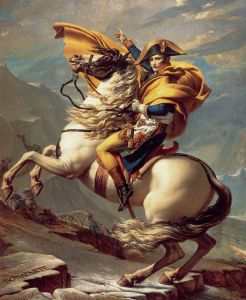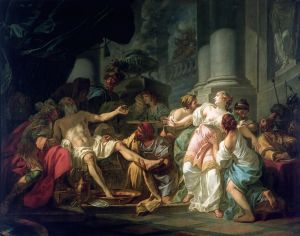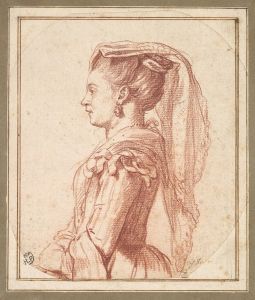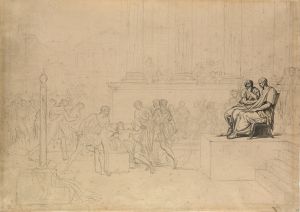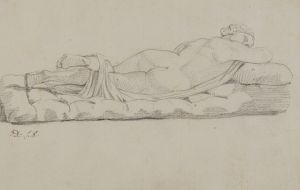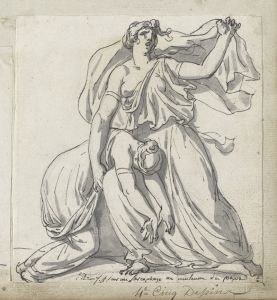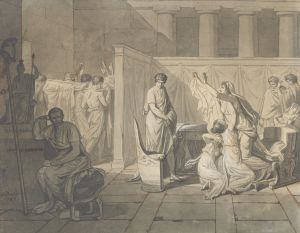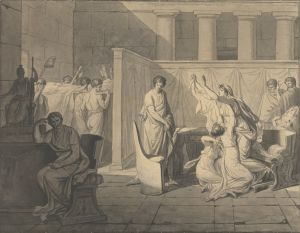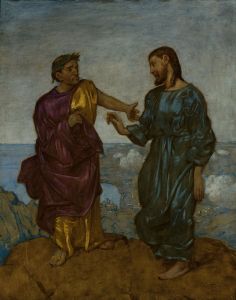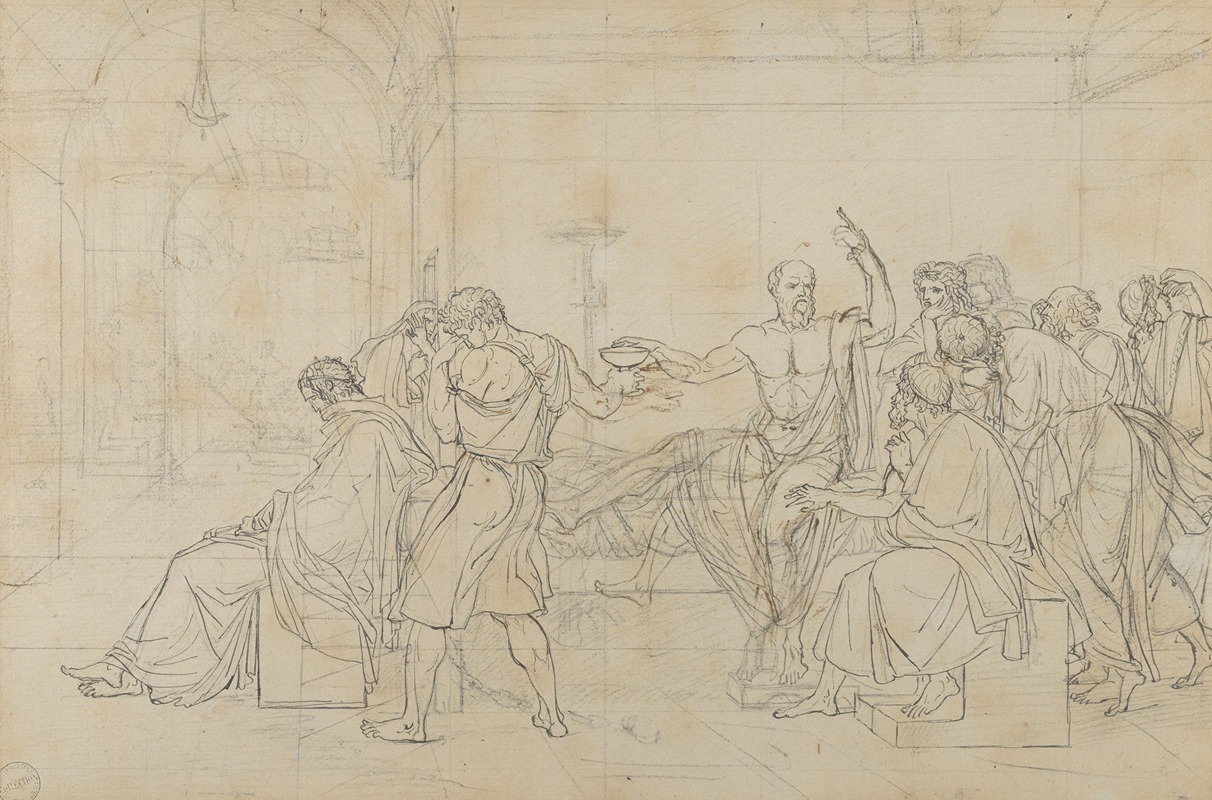
The Death of Socrates
A hand-painted replica of Jacques Louis David’s masterpiece The Death of Socrates, meticulously crafted by professional artists to capture the true essence of the original. Each piece is created with museum-quality canvas and rare mineral pigments, carefully painted by experienced artists with delicate brushstrokes and rich, layered colors to perfectly recreate the texture of the original artwork. Unlike machine-printed reproductions, this hand-painted version brings the painting to life, infused with the artist’s emotions and skill in every stroke. Whether for personal collection or home decoration, it instantly elevates the artistic atmosphere of any space.
"The Death of Socrates" is a renowned painting by the French artist Jacques-Louis David, completed in 1787. This neoclassical masterpiece is celebrated for its historical and philosophical significance, as well as its artistic excellence. The painting depicts the final moments of the ancient Greek philosopher Socrates, who was sentenced to death by drinking poison hemlock in 399 BCE.
Jacques-Louis David, a leading figure in the neoclassical movement, was known for his emphasis on classical themes and his meticulous attention to detail. "The Death of Socrates" exemplifies these characteristics, as it draws inspiration from classical antiquity and portrays a pivotal moment in Western philosophical history. The painting is housed in the Metropolitan Museum of Art in New York City.
In the composition, Socrates is shown sitting upright on a bed, reaching for the cup of poison with one hand while gesturing with the other, as if continuing to teach and engage in philosophical discourse even in his final moments. His expression is calm and resolute, reflecting his commitment to his principles and his acceptance of his fate. Surrounding Socrates are his distraught disciples, each reacting differently to the impending loss of their teacher. Among them is Plato, depicted as an old man seated at the foot of the bed, who appears deep in thought, a nod to his role in documenting Socrates' life and philosophy.
David's use of light and shadow enhances the dramatic effect of the scene. The light focuses on Socrates, highlighting him as the central figure and symbolizing his enlightenment and moral fortitude. The stark contrast between light and dark areas in the painting underscores the emotional tension and the gravity of the moment.
The painting is based on accounts from classical sources, particularly the dialogues of Plato, who was a student of Socrates. In these texts, Socrates is portrayed as a martyr for truth and reason, choosing to die rather than renounce his beliefs. David's interpretation of this narrative emphasizes the themes of sacrifice, integrity, and the pursuit of knowledge, which were highly valued during the Enlightenment period when the painting was created.
"The Death of Socrates" is not only a tribute to the philosopher himself but also a reflection of the political and intellectual climate of late 18th-century France. At the time, the country was on the brink of revolution, and the painting's themes of resistance to tyranny and adherence to personal convictions resonated with contemporary audiences. David, who later became an active supporter of the French Revolution, used his art to convey messages of civic virtue and moral strength.
Overall, "The Death of Socrates" remains a powerful and enduring work of art, admired for its technical skill, emotional depth, and philosophical insight. It continues to be studied and appreciated for its portrayal of one of history's most influential philosophers and its reflection of the ideals of the Enlightenment.





